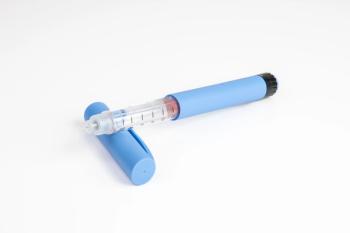
Aerobic and strength exercise program improves several variables during chemotherapy treatment
An individualized exercise program may significantly reduce fatigue, increase strength, and improve psychosocial functioning during cancer treatment, according to results of a small study reported by Maike de Wit, University Clinic Hamburg, Germany.
An individualized exercise program may significantly reduce fatigue, increase strength, and improve psychosocial functioning during cancer treatment, according to results of a small study reported by Maike de Wit, University Clinic Hamburg, Germany.
The study included 58 patients with hematologic malignancies or solid tumors who were undergoing myeloablative antileukemic therapy or high-dose chemotherapy followed by autologous peripheral blood stem cell transplantation. Patients were randomized to a training group or to a control group at the beginning of chemotherapy. The training group performed individually tailored aerobic exercise for 10 minutes and 3 strength-training exercises involving all of the main muscle groups for 20 minutes daily during treatment. "Patients were very enthusiastic about the aerobic training but not the muscle training," Dr de Wit said. The control group received standard physiotherapy and no exercise program.
Before and after each chemotherapy cycle, physical performance was assessed using spiroergometry and lactate levels; immune system function was evaluated with flow cytometry and blood samples; and treatment-related side effects were documented with daily patient interviews and the EORTC-QLQ-30 quality-of-life questionnaire.
Exercise training had a significant effect on a number of parameters compared with controls, Dr de Wit said. Self-reported fatigue was significantly reduced among patients randomized to exercise training (p = .03), and strength increased significantly (p = .02). Physical performance improved among the exercisers, and at 2 mmol/mL blood lactate concentrations, these patients had increased oxygen consumption (p=.03) and minute ventilation (p = .04) compared with the control group. Physical functioning scores increased significantly in the exercise group versus the control group (p = .04), and patients randomized to exercise training also required less antiemetic therapy (p = .01).
There were no significant changes in antibody levels or other immunologic parameters and no differences in flow cytometry, drug-related side effects, infections, or diarrhea between the exercise group and the control group. The exercise group had slightly shorter hospitalizations, but the difference was not significant.
After 1 year of follow-up, patients who had received the exercise program were more likely to report feeling better and more likely to have continued to incorporate exercise into their daily lives, Dr de Wit said.
Newsletter
Get the latest industry news, event updates, and more from Managed healthcare Executive.




















































